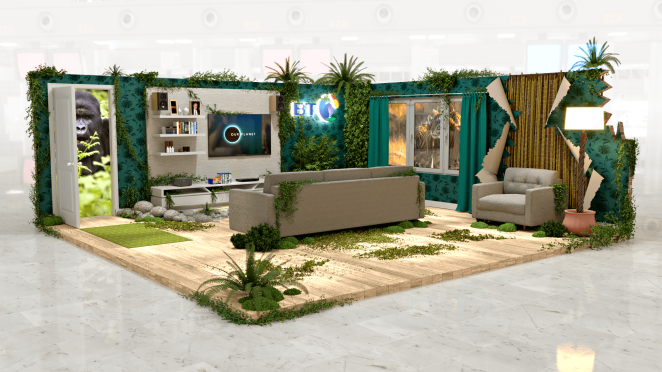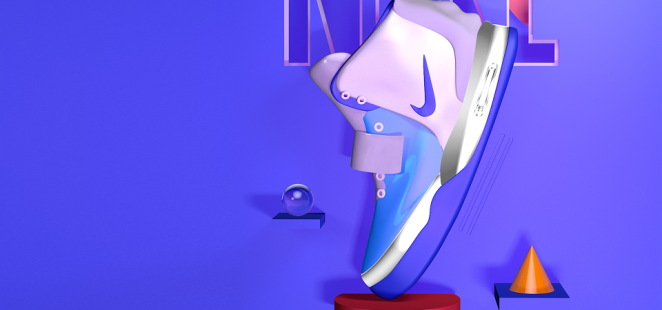In today’s increasingly digital world, the demand for 3D designers is on the rise. Whether you want to visualize a product, bring a virtual world to life, or create captivating animations, choosing the right 3D designer is critical. With so many talented individuals in the field, how do you find the perfect match for your project? This guide will help you navigate the process of hiring a 3D designer who can transform your vision into reality.
What is a 3D Designer?
Before diving into the process of employing a 3D designer, it is crucial to understand the role and responsibilities this profession entails. These professionals use computer software to create three-dimensional models, animations, and visualizations. They combine artistic creativity, technical expertise, and problem-solving skills to bring concepts and ideas to life in the digital realm.

Image Credit- John Svanberg
Key Responsibilities of a 3D Designer Include:
Modeling
3D designers meticulously craft characters, environments, and products using advanced software tools like Autodesk Maya, Blender, and ZBrush. This process involves creating the structural framework of the 3D objects. Designers work on everything from the basic wireframe to the fully detailed model, ensuring that each aspect of the model aligns with project specifications and artistic direction. The realism in these models is crucial, as it forms the foundation for more detailed work in texturing, shading, and animation. This step requires a deep understanding of form, proportion, and anatomy to ensure the models are lifelike and accurate.
Texturing and Shading
Once the model is complete, designers move on to texturing and shading, which are pivotal in bringing models to life with realistic visual details. Texturing involves applying high-quality images or patterns to a 3D surface, making it look more complex and real. For instance, textures can simulate the appearance of skin, cloth, or other materials. Shading, on the other hand, defines how the surface of the models interacts with light, involving the use of shaders to create effects like glossiness, opacity, or bumpiness. This process is essential for achieving authentic appearances such as wood grain, metallic sheen, or transparent glass, thereby enhancing the model’s overall realism.
Animation
Animation is where static models gain movement and behavior, bringing dynamic life to characters and objects within a digital environment. 3D designers use keyframe animation, motion capture, and other animation techniques to create fluid motion. This process is not just about moving parts but also about conveying emotions and intentions through movements, which is crucial for storytelling in video games, movies, and commercials. Effective animation can transform a simple narrative into an engaging experience for the audience, making characters and scenes feel believable and emotionally connected.
Rendering and Lighting
Rendering is the final step in the visualization process where the completed 3D models are converted into images or videos. This involves setting up virtual cameras, choosing the correct angle, and determining the composition of the final shot. Lighting plays a crucial role in rendering, as it dramatically affects the mood and realism of the scene. Techniques such as global illumination and ray tracing are used to simulate realistic lighting environments, reflecting, refracting, and scattering light just as it does in the real world. These methods help in creating photorealistic images that are visually compelling. The careful calibration of lighting and rendering settings is essential to ensure that the final output matches the intended visual style and tone of the project.
What to Look for in a 3D Designer?
Selecting the right 3D designer is a critical decision that can greatly influence the outcome of your project. Here are expanded details on the key qualities to consider when assessing potential candidates:
Understanding of Composition and Visual Storytelling
The best 3D designers combine technical proficiency with a strong sense of artistry and narrative. Look for designers who demonstrate an exceptional ability in composition—the way elements are arranged within a scene. Good composition guides the viewer's eye and contributes to the overall impact of the visual. Visual storytelling is another essential skill; it involves the ability to convey a story or message through visual media. Effective visual storytellers can evoke emotions and engage audiences, making their creations memorable and impactful. When evaluating candidates, consider their ability to use perspective, color, lighting, and spatial relationships to tell a story or enhance the mood of the scene.
Technical Proficiency
A 3D designer must be adept in using industry-standard software and tools. Proficiency in 3D modeling, texturing, and rendering software like Autodesk Maya, Blender, V-Ray, or Arnold is crucial. These tools are complex and require a deep understanding to use effectively. A designer’s technical skill ensures that they can execute complex designs and troubleshoot problems during the creation process. When assessing technical proficiency, look not only for familiarity with these tools but also for an understanding of their more advanced features, which are often necessary for creating high-quality, professional-grade visual content.
Attention to Detail
Attention to detail is what often separates good designs from great ones. It involves a meticulous approach to every aspect of the 3D design process, from the initial concept to the final output. Small imperfections or overlooked elements can detract from the realism and effectiveness of a design. When reviewing a designer’s portfolio, pay close attention to how well they handle details in textures, lighting, and anatomical accuracy of characters. Also, observe whether the environments feel lived-in and whether objects interact realistically with their surroundings.
Additional Considerations
- Collaborative Skills: Since 3D projects often require teamwork, assess how well the candidate works with others, including their ability to communicate effectively and integrate feedback.
- Problem-Solving Ability: 3D design can present numerous technical and creative challenges. Look for designers who demonstrate resourcefulness and an ability to think critically to overcome obstacles.
- Adaptability: The field of 3D design is continually evolving with new technologies and techniques. A designer’s willingness to learn and adapt to new tools and trends is a valuable trait.
By focusing on these areas, you will be able to identify a 3D designer who not only has the necessary technical skills but also the creative vision and attention to detail required to bring your project to life effectively and impressively.

Image Credit- John Svanberg
Using Creativepool
Looking to hire a 3D Designer Creativepool has thousands of talented members waiting to make your project shine.
There are 3 ways for you to find a 3D Designer on Creativepool.
Search and Contact
Are you looking for more control over your collaborations and the selection process? Taking a proactive approach to talent scouting involves directly searching for talent and handpicking individuals you’d like to work with.
Here’s how it works: Simply search for 3D Designers and explore the results. You’ll have the opportunity to review their projects, CVs, and resumes, allowing you to make an informed decision for your next hire.
At Creativepool, we utilize a set of indicators to rank our members based on their job titles. By exploring the top 25 ranked 3D Designer, you can efficiently discover the most talented individuals on our platform. However, don’t overlook the potential of finding untapped talent among our thousands of other skilled members.
Once you identify a professional whose style and experience align with your requirements, reach out to them directly by clicking on the message tab. If you have a specific vision for the type of creative professional you’d like to collaborate with, utilizing our search feature is the ideal approach.
Once you’ve discovered a professional whose style and experience resonate with your needs, reach out to them directly by clicking on the message tab. If you have a precise vision of the type of creative professional you’d like to collaborate with, searching is the ideal approach.
Post a studiogig
Looking for a freelance 3D Designer? The quickest way to find available talent is to advertise your brief. With us, briefs for individuals are called studiogigs.
Posting your role is a simple process. Once you submit it, we kick into action behind the scenes to find the perfect talent for your requirements. After advertising your brief, all you need to do is sit back and wait for direct applications from interested candidates
Post a job
If you are looking for a permanent 3D Designer, then advertising a 3D Designer job is the best way to attract talent. The process is identical to posting a studiogig.
Once you post your role, we’ll carefully review the advertisement details. We’ll then send job alerts to our community members who closely match your criteria, and your role will be prominently featured on our jobs board. Interested StudioGigs applicants will apply directly to you.
Whether you’re posting a job or a StudioGig, or if you’re searching for talent, rest assured that you retain full control over whom you choose to hire. There’s no obligation to select any of the applicants, and you can negotiate rates directly with them.
If you need any help on your talent hunt. You can chat with us or send us a message. We'd be happy to help.

Image Credit- Aly Shaw
Conclusion
In the dynamic world of 3D design, choosing the right professional can make or break your project. Beyond technical skills, consider a holistic evaluation that encompasses experience, compatibility, and intuition.
It's an approach that involves a blend of art and science. Beyond skills and experience, consider compatibility and intuition. Take your time, research thoroughly, and trust your instincts. Remember, a successful collaboration is more than just pixels—it’s about shared vision and creative synergy.






